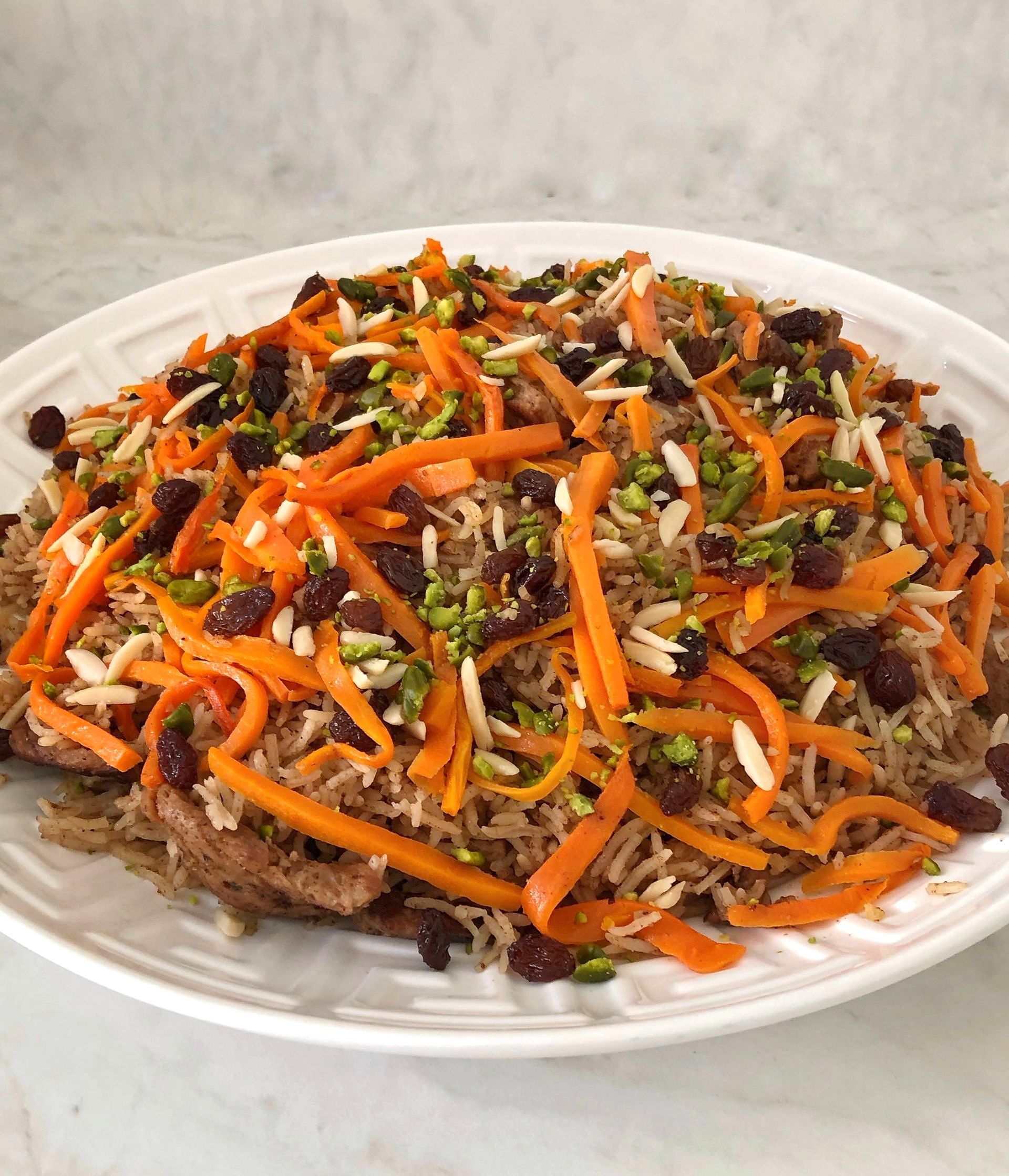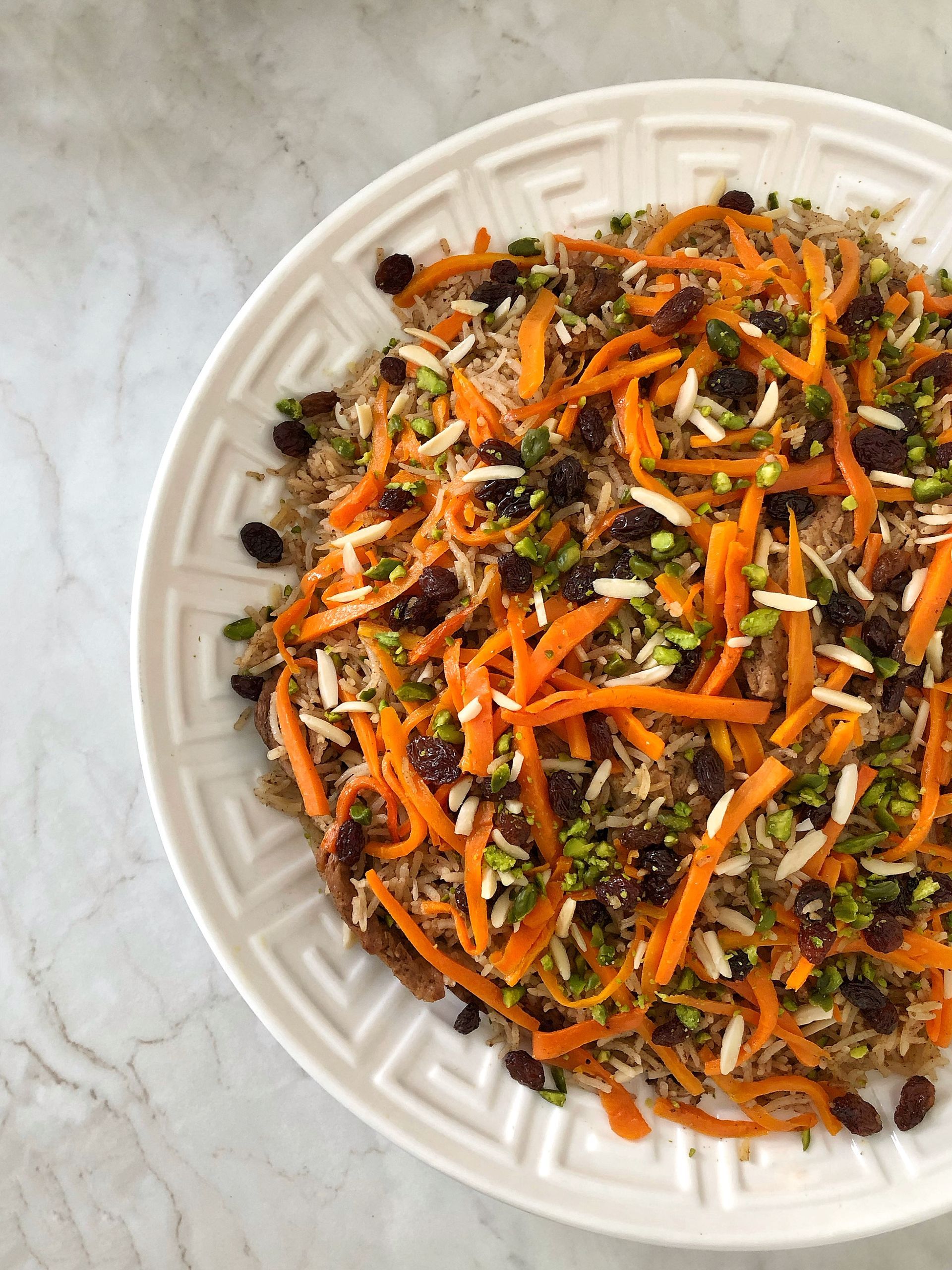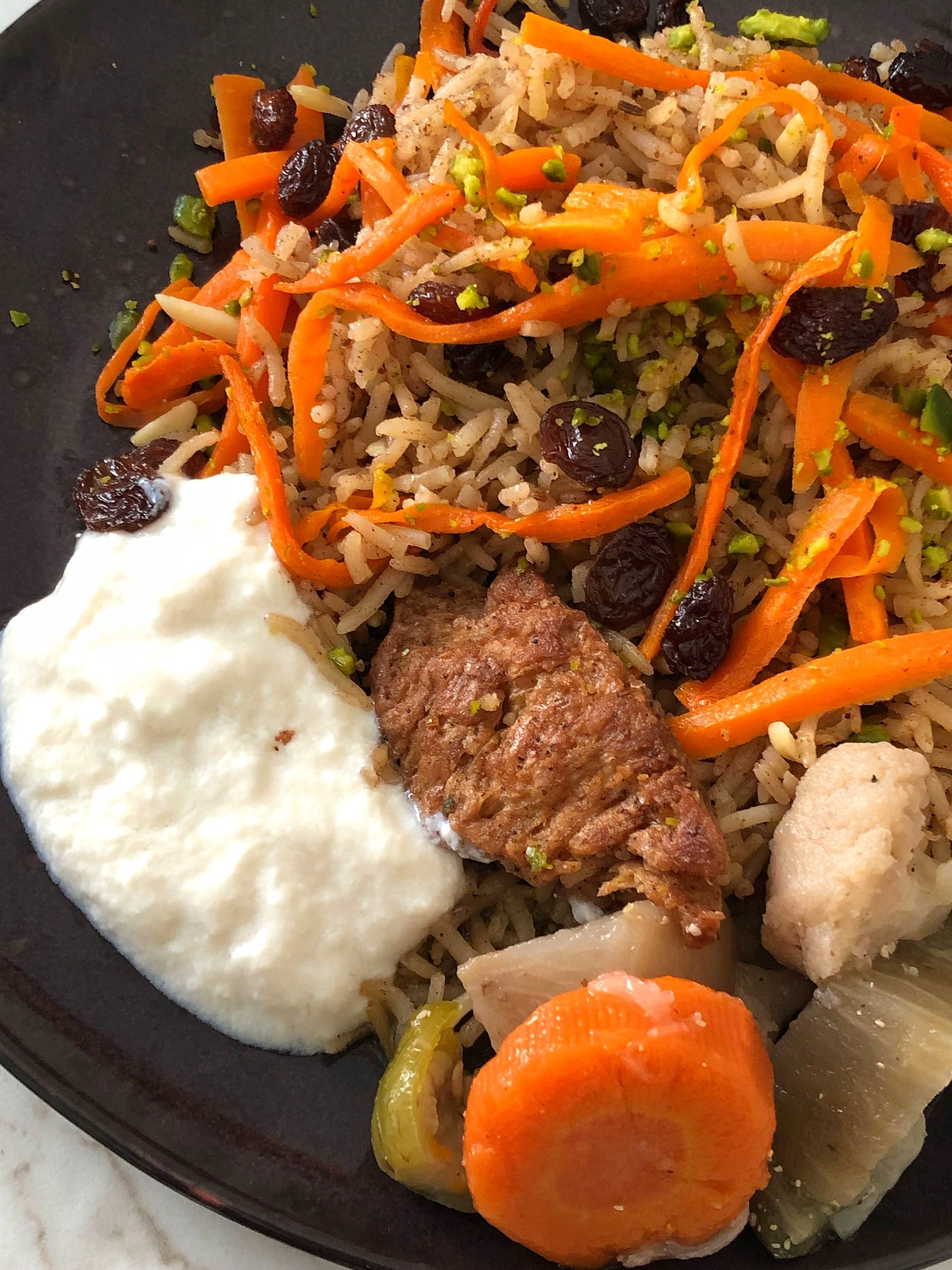KĀBULI PULAO
4-6
2.5 h (including soaking time)
| Ingredients | Amount |
|---|---|
| Rice: | |
| basmati Rice | 800 g |
| salt | 1 tbsp (level) |
| rapeseed oil | 1 tbsp |
| Soy "meat": | |
| dried soy medallions | 125 g |
| ground coriander | 1 tsp |
| black pepper | 1 tsp |
| vegetable stock powder | 1½ tsp |
| boiled water | 400 ml |
| Pulao-Fond: | |
| onions | 4 (medium) |
| rapeseed oil | 130 ml |
| Afghan Pulao spice | 2 tbsp |
| cumin, ground | 1 tsp |
| seasoned soy "meat" broth | 380 ml |
| water | 30 ml |
| Topping: | |
| Carrots | 4 large |
| Raisins | 150 g |
| Sliced almonds | 1 handful |
| Chopped pistachios | 1 handful |
| Also: | |
| another pinch of the Pulao rice mix | |
| some aluminum foil |
"The tastier the Kābuli Pulao, the wiser the person who cooked it"
Kābuli Pulao is a celebratory dish often served at special occasions like weddings, family gatherings, or other festive events. The name "Kābuli" is derived from the capital city of Kabul, highlighting the dish's importance throughout the region. Traditionally, Kābuli Pulao is made with Basmati rice, lamb or beef, raisins, pistachios or almonds, carrots, and a blend of spices (including cardamom, cinnamon, and cumin).
A particularly beautiful anecdote suggests that a well-made Kābuli Pulao reflects the age or wisdom of the cook: the tastier it is, the wiser and more experienced the person who prepared it. Indeed, the art of perfectly balancing all the components — the sweetness and savory elements — requires patience, finesse, and a lot of dedication.
Perhaps it is this dedication that makes Kābuli Pulao so special. A dish that tastes like home, like memories, like togetherness. My vegan version preserves all of that — the fragrant rice, the sweet carrots, the juicy raisins, and the crunchy pistachios. Only the meat is replaced with flavorful soy protein. The preparation differs slightly from the original, but the result? Just as rich in flavor, just as familiar.
The best part: This version honors tradition, is entirely free of animal suffering, and gives an old dish a plant-based future — without compromising on taste. Give it a try and let yourself be convinced!
PERSONAL RECOMMENDATION
Kābuli Pulao tastes best when served with a fresh salad, some unsweetened soy yogurt, and Torchi (vinegar-pickled vegetables).

PREPARATION
- Prepare the rice: Wash the rice thoroughly until the water runs clear. Then, soak it in lukewarm water for 1–2 hours.
- Prepare the soy "meat": Combine soy medallions with vegetable broth, coriander, pepper, and hot water. Cover and let it sit for about 30 minutes. Afterward, strain the medallions, saving the liquid (it should yield around 380 ml). Allow the medallions to cool, squeeze out any excess liquid with your hands, cut them in half, and fry them golden brown in hot oil. Set aside.
- Make the Pulao broth: Dice the onions and sauté them in rapeseed oil until they are caramelized and brown. Add the spices, the reserved soy liquid, and some water. Bring it to a brief boil, then remove from heat. Puree the mixture, pour it into a container, and set aside.
- Prepare the toppings: Cut the carrots into thin strips and fry them golden brown in oil. Remove them and quickly toast the raisins in the same oil (watch out: they burn quickly). Wrap both separately in aluminum foil and set aside.
- Cook the rice: Bring water to a boil in a large pot, adding salt and a little rapeseed oil. Drain the soaked rice and add it to the boiling water. Cook for about 7 minutes, until the rice is tender but still firm. Drain and rinse with cold water, then return to the pot.
- Combine everything: Mix the Pulao broth into the rice. Stir in the soy "meat." Use a spoon to form a small mound in the center and make several steam vents in the rice with a knife or spoon to allow the steam to escape. Place the carrots and raisins (in aluminum foil) on top.
- Steam: Wrap the pot lid in a clean kitchen towel and close the pot tightly with it. Steam the rice on very low heat for about 50 minutes.
- Serve: Transfer the rice to a large platter and garnish with carrot strips, raisins, slivered almonds, and chopped pistachios. Congratulations on making the plant-based version of Kābuli Pulao — you did it!
Nosh-e jān! Enjoy your meal!




